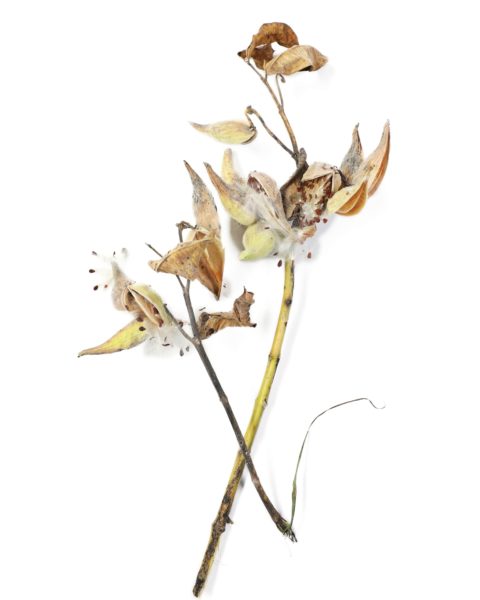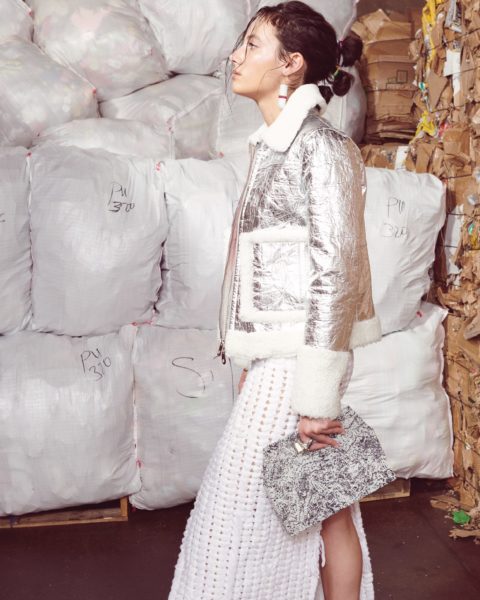The Sustainable Fabric Alternatives That Will Replace Down and Cotton
Researchers are making sustainable fabrics that look, feel and do good all at the same time.
Consumers have become so accustomed to synthetic textiles that few realize how much damage they’re doing to their bodies and the planet. Typical clothing dyes use harsh chemicals that could be linked to health issues as varied as headaches and seizures. Meanwhile, ubiquitous cotton, whose crops require intense amounts of water to grow, makes fashion an even more environmentally strenuous industry.
Luckily, a desire to reduce this reliance on cotton has helped spur research into sustainable fabric alternatives, and with each passing year, we’re seeing more innovation in the field. From pineapple leather to milkweed-insulated coats, it’s time to reconsider what’s in our closets and shop smarter.

Milkweed
Many of us have grown to love our down-filled puffer coats, but the plucking process for these feathers can be cruel and very painful. Milkweed, which is used in some Quartz Co. jackets, is the unlikely hero here. Its hollow fibres make it an insulator, and it’s perfect for stuffing. It’s also a win-win situation: Caterpillars feast on milkweed, meaning the more we plant, the more monarch butterflies we’ll see.

Pineapple
We usually discard pineapple leaves; however, their strong fibres can be used to create soft, lightweight fabrics that are durable and water-resistant. In fact, before the rise of cotton, making textiles out of pineapple was a popular process across the globe, particularly in the Philippines. Depending on how the fibres are manipulated, pineapple can create a beautiful linen-like fabric or textured faux leather (like in the jacket above!)

Hemp
Cannabis sativa is a type of wonder plant and, no, not just for those reasons. It grows quickly, doesn’t need a lot of water and requires very little space—cotton uses twice as much. In addition, it’s a natural pest repellent (no icky pesticides required) and returns 60 to 70 per cent of the nutrients it takes from the soil. Hemp fabric is hypoallergenic, and while it may be a little stiff at first, it becomes softer with each wear.
Mushroom
From the cost of raising livestock to the animals’ eventual slaughter to the chemical processes involved in dying the skins, leather is one product that could use some sustainable fabric alternatives. Mycelium, the “rootlike” structure of mushrooms, might be an option. Mycelium fibres grow fast and are completely renewable and biodegradable. The suede-like texture is also easy to manipulate, which means the material can be made to look like it came from a cow or a snake.

Banana
Around one billion tonnes of banana stems are discarded every single year, yet, similar to pineapple leaves, they could be used for textiles. In fact, as far back as the 13th century, these stems were used to create durable fabric in Japan. Despite the fabric’s strength, it remains soft and breathable, and its subtle sheen is often compared to that of silk.
Corn
To create fibres from corn requires focusing on the plant sugars. The end result is a soft, anti-wrinkle fabric. Reebok actually launched a Cotton + Corn initiative last year to help reduce its environmental footprint and recently revealed its first product: a pair of petroleum-free, non-toxic sneakers.

Orange
With the launch of a capsule collection in 2017, Salvatore Ferragamo was the first fashion house to use fabric made from the fibres of citrus fruit. The designs were created using citrus cellulose, a by-product of the fruit’s juice. The fibres were a popular choice given their ability to create a textile that’s delicate and lightweight.
Kombucha
This trendy fermented drink is composed of a sugary tea base and the symbiotic culture of bacteria and yeast (or SCOBY). A bundle of SCOBY can grow into huge sheets that can be moulded, dyed and dried. The finished product is tough and resembles leather, but, unfortunately, it’s also fleeting. The material has zero water resistance,
which means it has a pretty short lifespan.








